Posts Tagged: longhorned bee
Battle Between a Butterfly and a Bee
So, here you are, a newly eclosed Western tiger swallowtail, Papilio rutulus, eager to sip some nectar from a Mexican sunflower, Tithonia rotundifola, in a Vacaville garden. It's a warm, windless day, and you're anxious to score, score,...

A Western tiger swallowtail, aware that a territorial bee is about to attack, raises its tails to ward off the intruder. (Photo by Kathy Keatley Garvey)

The Western tiger swallowtail begins to take flight. (Photo by Kathy Keatley Garvey)

The Western tiger swallowtail leaps off as the bee draws closer. (Photo by Kathy Keatley Garvey)

The Western tiger swallowtail escapes a hit by the longhorned bee. (Photo by Kathy Keatley Garvey)
Decisions, Decisions! The Katydid or the Bee?
So here's this crab spider stalking a katydid nymph foraging on a Mexican sunflower, Tithonia rotundifola. Dinner awaits! Suddenly a native bee, Melissodes agilis, lands next to the katydid and begins to sip some nectar. Decisions, decisions! Do...
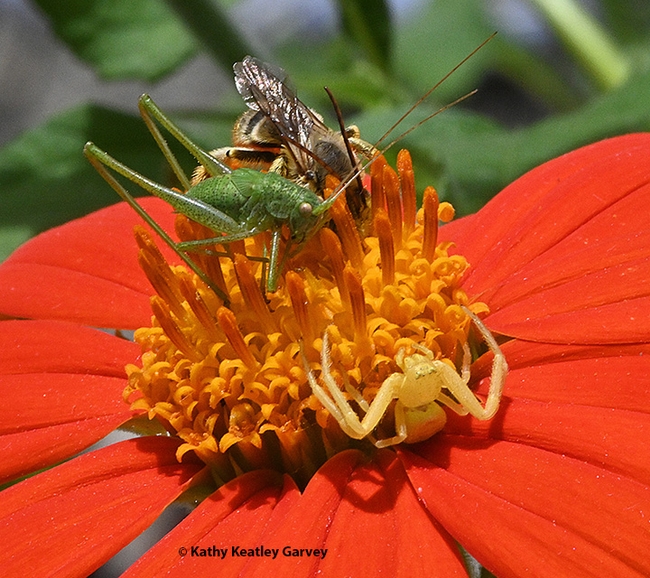
A crab spider is about to nail a katydid nymph when a longhorned bee, Melissodes agilis, appears on the Mexican sunflower. (Photo by Kathy Keatley Garvey)
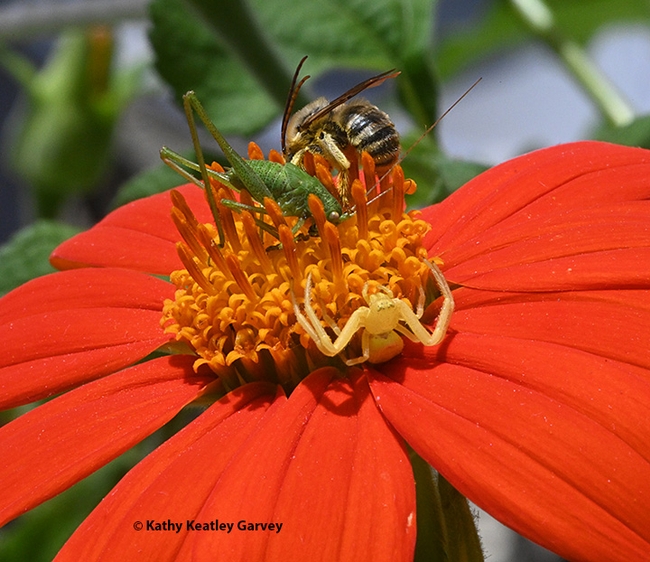
The longhorned bee, Melissodes agilis, continues to forage under the watchful eye of the crab spider. (Photo by Kathy Keatley Garvey)
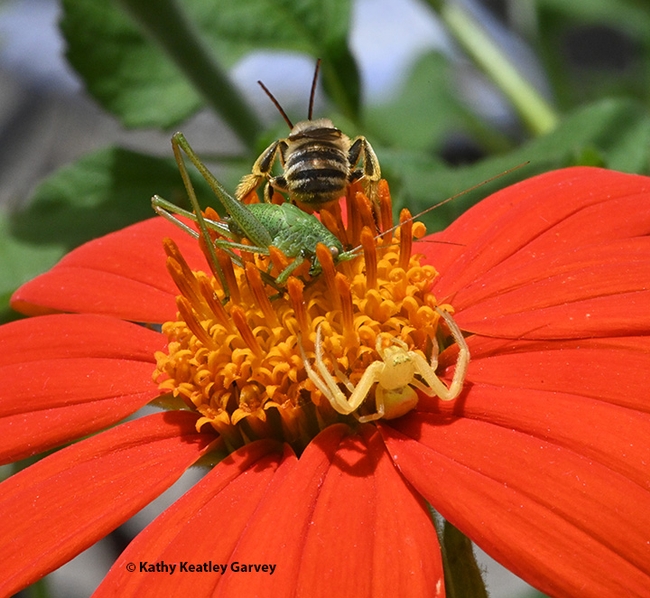
The longhorned bee turns aways from the crab spider, still unaware of the danger. (Photo by Kathy Keatley Garvey)
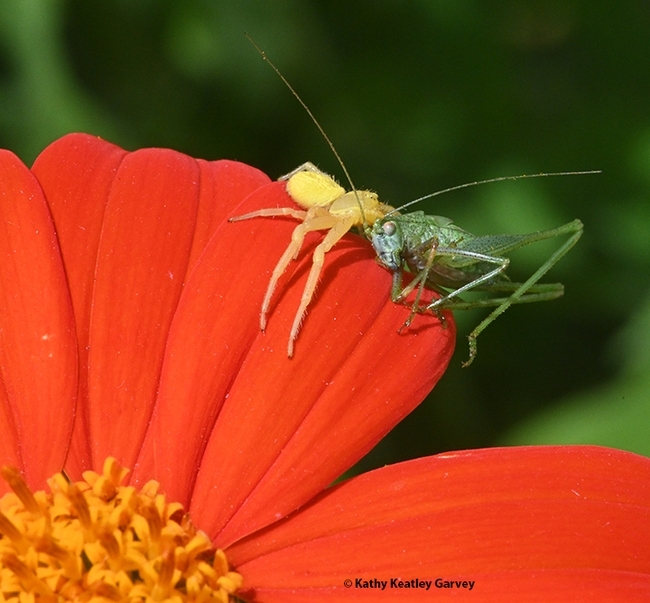
The crab spider hauls the struggling katydid nymph over the side of the Mexican sunflower. (Photo by Kathy Keatley Garvey)
Meet a Longhorned Bee
Picture this. A female Melissodes agilis, the so-called "agile longhorned bee," is foraging on a Mexican sunflower, Tithonia rotundifola. Longhorned? So named because they have unusually long antennae. Think of this species as the insect...
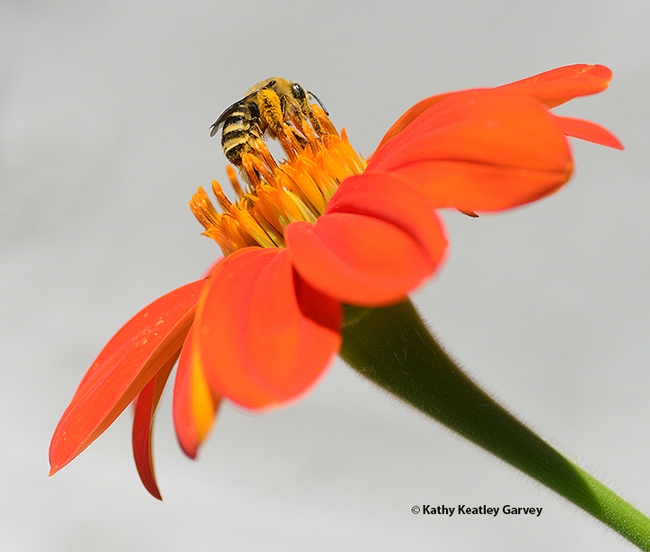
A female Melissodes agilis foraging on a Mexican sunflower, Tithonia rotundifola. (Photo by Kathy Keatley Garvey)
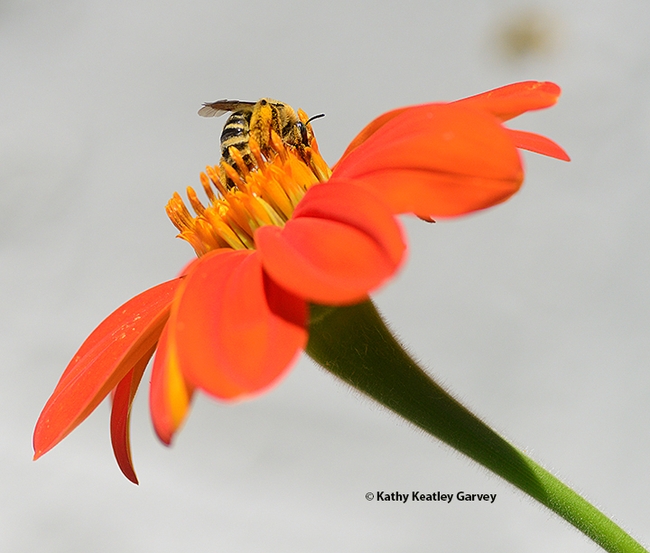
The female Melissodes agilis continues foraging on a Mexican sunflower, Tithonia rotundifola. (Photo by Kathy Keatley Garvey)
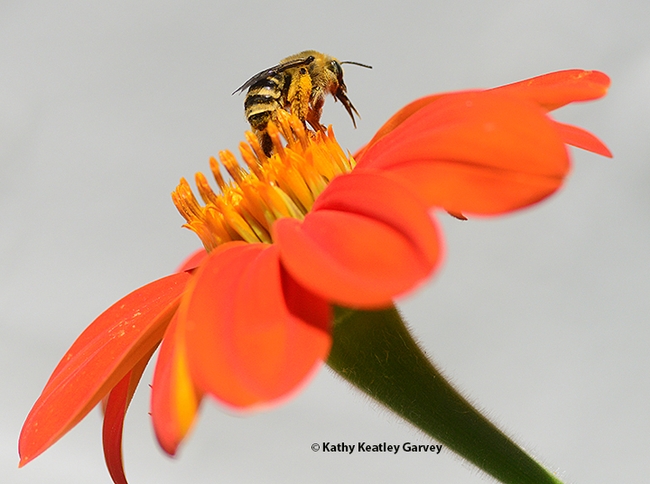
Proboscis out, the female Melissodes agilis is finished foraging on the Mexican sunflower, Tithonia rotundifola, and ready to leave. (Photo by Kathy Keatley Garvey)
The Target: A Gulf Fritillary
So here's this Gulf Fritillary, Agraulis vanillae, nectaring on a Mexican sunflower, Tithonia rotundifola. It's National Pollinator Week. All's right with the world. The butterfly had visited a passionflower vine, Passiflora, its host...
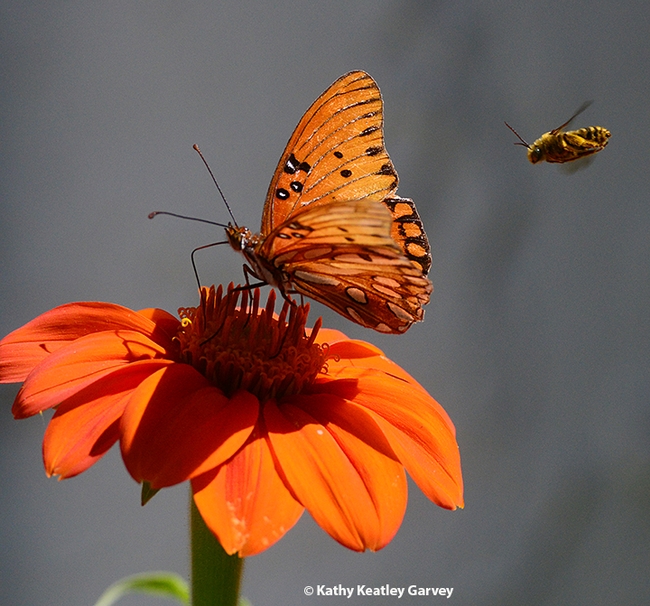
A male long-horned bee, a Melissodes agilis, targets a Gulf Fritillary on a Mexican sunflower. (Photo by Kathy Keatley Garvey)
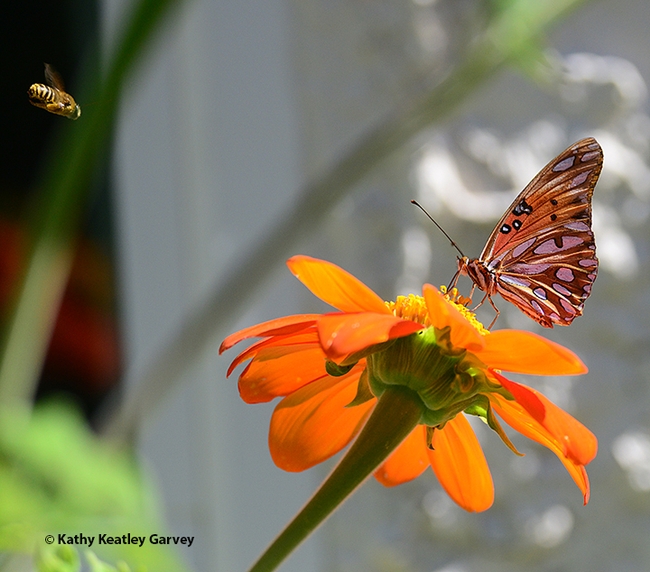
Coming in from a different direction, the male territorial longhorned bee targets the Gulf Fritillary occupying "his" flower, a Mexican sunflower. They're all "his" flowers. (Photo by Kathy Keatley Garvey)
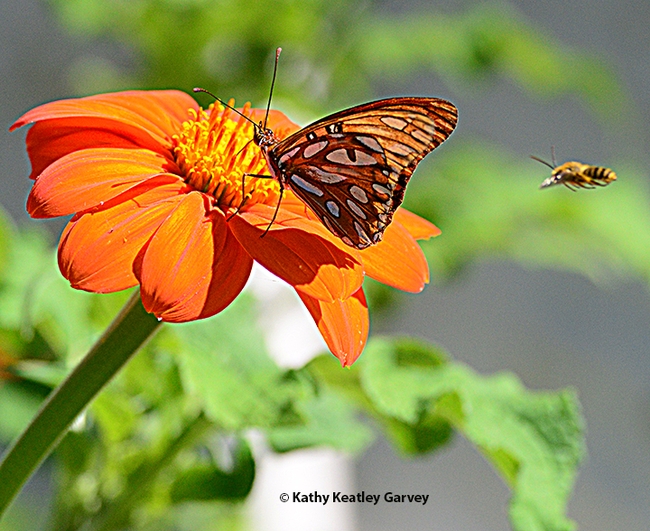
Another line of attack! The male longhorned bee aims straight for the Gulf Fritillary. (Photo by Kathy Keatley Garvey)
What's on the Day's Agenda for This Longhorned Bee?
Hey, the sun's up! It's time to rise and shine! Maybe I'll shine before I rise...or maybe I'll... Anyway, I just woke up, and I'm starting to stir. I'm ready to conquer the day. I shall Sip nectar Seek girlfriend Guard the flower patch by...
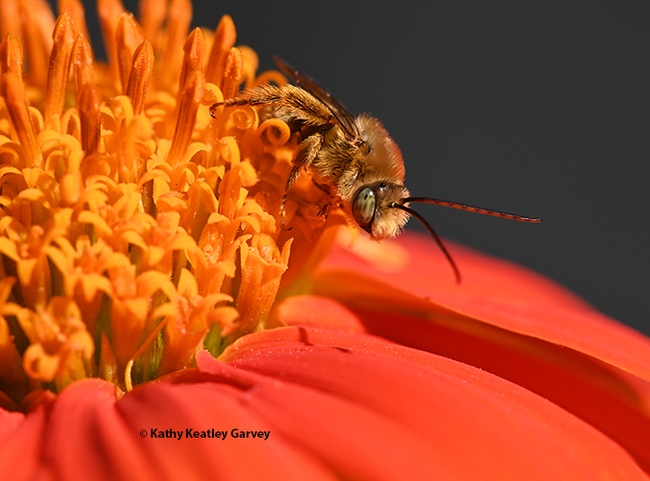
After spending the night sleeping on a Mexican sunflower, Tithonia rotundifola, a male longhorned bee, Melissodes agilis, starts to stir. (Photo by Kathy Keatley Garvey)

